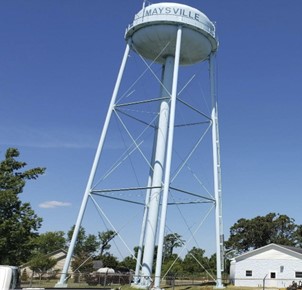We Believe The World Needs Better Ways To Treat PFAS
Challenge
Per- and polyfluoroalkyl substances (PFAS) were detected in samples pulled from drinking water in the town of Maysville, North Carolina. The system provides drinking water to approximately 450 customers. PFAS levels were above the drinking water limits, which as the time were just 70 ppt for specifically perfluorooctanoic acid (PFOA) and perfluorooctane sulfonic acid (PFOS). Enthalpy Analytical was hired by the town to perform the testing and analysis and help the town understand its results. The town retained an engineering firm to prepare a Preliminary Engineering Report (PER), which evaluated alternatives to remedy the PFAS contamination in the well water. ECT2 was contacted as a potential solution.

City of Maysville, NC. Photo by TRC.
Solution
ECT2 evaluated the water chemistry on-site in consultation with the engineering firm, TRC, to determine the best path forward. Based on the various wet chemistry parameters (e.g., hardness, iron, manganese, total dissolved solids, total organic carbon) to gain a general understanding of water quality, it was determined to keep the pretreatment in place a provide a downstream PFAS treatment system.
TRC assessed potential technologies for treatment of the water. This assessment included Ion Exchange (IEX) resin, and Granulated Activated Carbon (GAC). In consultation with TRC, the customer selected the use of a GAC and SORBIX™ PURE Ion Exchange (IEX) resin treatment system by ECT2 as the best solution for a multitude of reasons, including cost, treatment efficacy, and overall sustainability.
The PFAS process uses GAC up front, primarily as a pretreatment filter to remove any trace of iron remaining after the greensand filtration to avoid binding the IEX resin. GAC also removes chlorine, as any oxidizing agent (including chlorine) can destroy the PFAS capacity of IEX resin. Water exits the GAC unit and passes through the treatment system, where the targeted PFAS compounds are removed below detection limits.

Result
ECT2 helped the customer and their engineering team design and install a treatment system quickly. This successful project allows the town to provide clean water to its residents and maintain its well and existing infrastructure into the future.
ECT2’s sustainable solution, which uses both GAC and IEX resin, is a model for other communities dealing with PFAS in their impacted water.

Brian Regan, EPA Commissioner, toured the facility in the spring of 2023. Photo by TRC.
